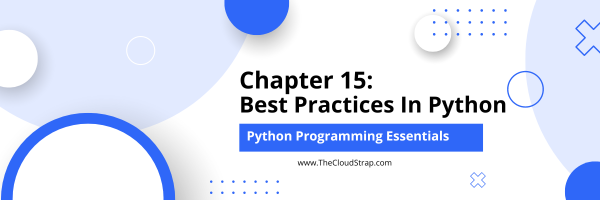Best Practices In Python

Python is a fantastic language that’s easy to pick up but to truly master it, it’s important to understand and apply best practices. This blog post will cover four crucial areas: writing clean and readable code, testing and debugging techniques, performance optimization, and the features of Python 3 and migration strategies.
Writing Clean and Readable Code
The importance of writing clean, readable code cannot be overstated. It makes your work easier to understand, maintain, and debug. Here are some tips for writing clean and readable Python code:
Use meaningful names
Variables, functions, and classes should have descriptive names that make their purpose clear. If a name requires a lengthy comment to explain what it does, it might be worth renaming.
Follow PEP 8 style guide
PEP 8 is the official style guide for Python code. It provides conventions for code layout, naming schemes, and more. Following this style guide will make your code more readable and professional.
Use comments and docstrings wisely
Comments should explain why something is done, not what is being done. Docstrings (comments at the beginning of functions, classes, or modules) should provide a brief summary of what the function, class, or module does.
Keep functions and classes small
Each function or class should have a single responsibility. If a function or class is doing too many things, it might be a sign that it should be split into smaller, more manageable parts.
Testing and Debugging Techniques
Testing and debugging are integral parts of the development process. Python provides a number of tools and libraries to make these tasks easier:
unittest
Python’s built-in library for creating unit tests. It allows you to create test cases, automate tests, and check your code’s correctness.
pytest
A popular third-party testing library that offers more features and simpler syntax than unittest.
pdb
Python’s built-in debugger. It allows you to step through your code, examine variables, and find where things are going wrong.
Debugging by printing
Sometimes, the simplest way to debug is by printing out variables at different points in your program to see what’s happening. Remember to remove or comment out these print statements when you’re done!
Performance Optimization
While Python may not be known for its speed, there are numerous ways to optimize Python code for performance:
Use built-in functions and libraries
Python’s built-in functions and libraries are generally faster than custom code. For example, using the join() function to concatenate strings is faster than using the + operator.
Use list comprehensions
List comprehensions are faster and more readable than for-loops for creating lists.
Profiling
Use Python’s built-in cProfile module to see which parts of your program are taking the longest. This will help you focus your optimization efforts where they’re needed most.
NumPy and Pandas
If you’re working with numerical data, using NumPy arrays instead of lists can result in significant speedups. Similarly, Pandas is more efficient for data manipulation than standard Python code.
Python 3 Features and Migration
Python 3 introduces a number of improvements and changes over Python 2. If you’re still using Python 2, it’s high time to migrate as it’s no longer maintained. Here are some key features of Python 3:
Print is a function
In Python 2, print was a statement. In Python 3, it’s a function. This means you’ll need parentheses around what you want to print.
Integer division
In Python 3, dividing two integers with / results in a float, not an integer.
Unicode strings
In Python 3, all strings are Unicode by default.
New syntax features
Python 3 introduces several new syntax features, such as f-strings for easier string formatting, the yield from syntax in generators, and keyword-only arguments.
Migrating from Python 2 to Python 3 can be a significant task, especially for large codebases, but tools like 2to3 can automate some of the process. It’s also important to thoroughly test your code after migration to ensure everything still works as expected.
In conclusion, mastering Python involves much more than just knowing the language syntax.
This post was published by Admin.
Email: admin@TheCloudStrap.Com
